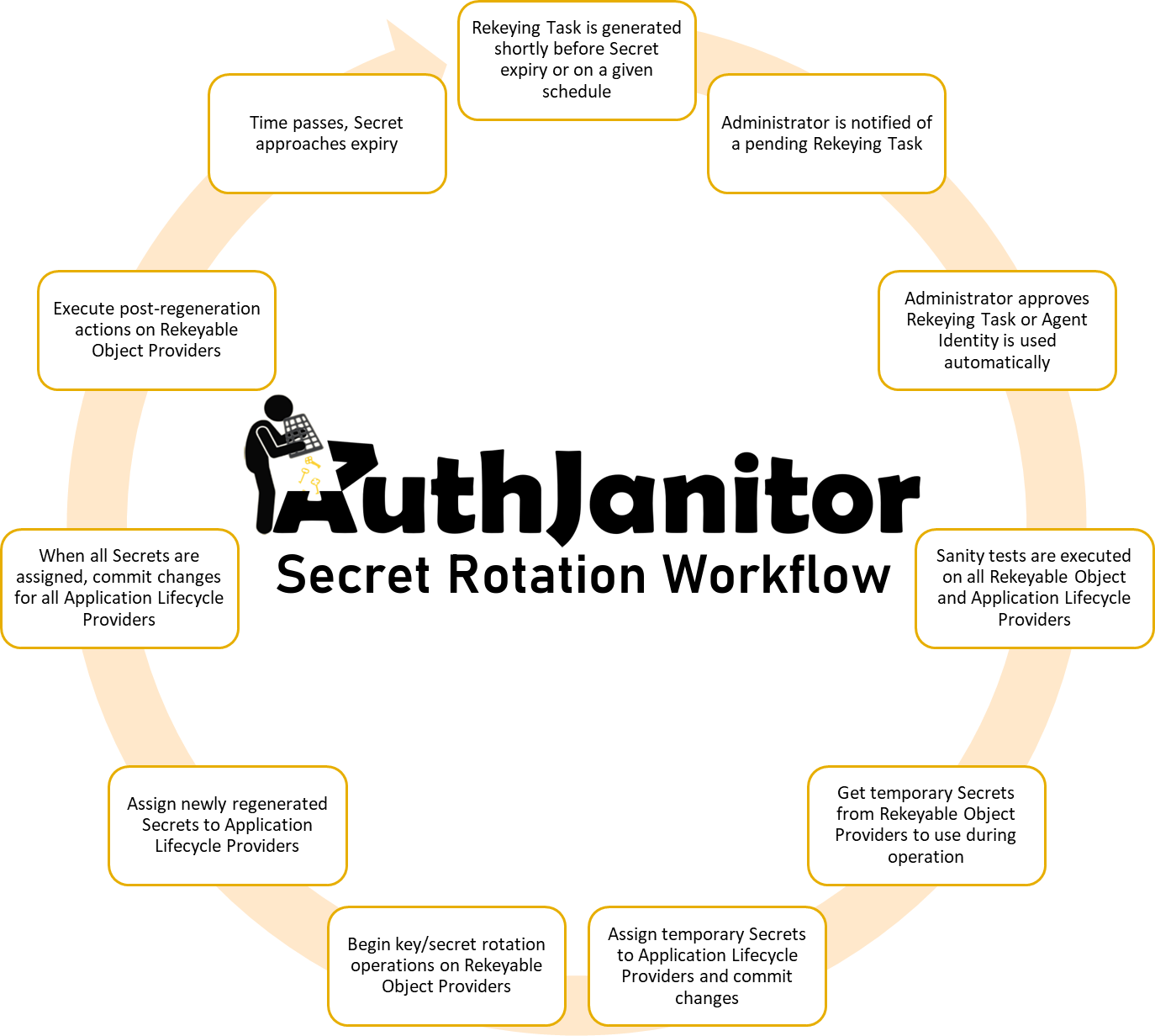-
Notifications
You must be signed in to change notification settings - Fork 17
Home

Manage the lifecycle of your application secrets in Azure with ease. Migrate to more secure, auditable operations standards on your own terms. AuthJanitor supports varying levels of application secret security, based on your organization's security requirements.
Disclaimer: Using AuthJanitor does not guarantee the security of your application. There is no substitute for a proper security review from a reputable cybersecurity and/or auditing partner.
🔴 This system has not been thoroughly tested yet! Please use at your own risk! 🔴
🔓 Learn more about how AuthJanitor can improve the security around your application secrets here.

A module which implements some functionality, either to handle an Application Lifecycle or rekey a Rekeyable Object.
Configuration which the Provider consumes in order to access the Application Lifecycle or Rekeyable Object.
A Provider with the logic necessary to handle the lifecycle of application which consumes some information (key, secret, environment variable, connection string) to access a Rekeyable Object.
A Provider with the logic necessary to rekey a service or object. This might be a database, storage, or an encryption key.
A GUID-identified model which joins a Provider with its Provider Configuration. Resources also have a display name and description. A Resource can either wrap an Application Lifecycle or a Rekeyable Object provider.
A GUID-identified model which joins one or more Resources which make up one or more rekeyable objects and their corresponding application lifecycles. When using multiple rekeyable objects and/or lifecycles, a User Hint must be specified. When the rekeying is performed, the User Hints are matched between rekeyable objects and application lifecycles to identify where different secrets should be persisted. Managed Secrets also have a display name and description, as well as metadata on the validity period and rotation history.
A GUID-identified model to a Managed Secret which needs to be rekeyed. A Rekeying Task has a queued date and an expiry date; the expiry date refers to the point in time where the key is rendered invalid. A Rekeying Task must be approved by an administrator or will be executed automatically by the AuthJanitor Agent.
